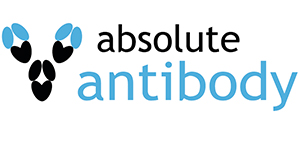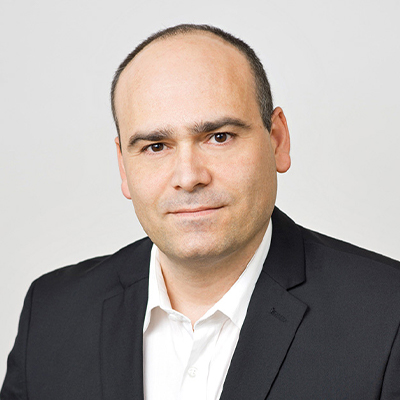Anti-CXCR4 (515H7)
Anti-CXCR4 [515H7], Recombinant, IgG1 kappa, Human
SKU
ABAAb04381-10.3
Packaging Unit
100 μg
Manufacturer
Absolute Antibody
Availability:
loading...
Price is loading...
CloneID: 515H7
Heavy Chain modification: Fc Silent™
Antigen Long Description: The original format of the antibody was generated by immunizing Balb/C mice with recombinant NIH3T3-CXCR4 cells and/or peptides corresponding to CXCR4 extracellular N-term and loops.
Buffer Composition: PBS with 0.02% Proclin 300.
Chimeric Use Statement: This is a reformatted human IgG1 Fc Silent™ antibody, based on the original human IgG1 format, created for improved compatibility with existing reagents, assays and techniques.
Available Custom Conjugation Options: AP, HRP, Fluorescein, APC, PE, Biotin Type A, Biotin Type B, Streptavidin, FluoroProbes 647H, Atto488, APC/Cy7, PE/Cy7
Uniprot Accession No.: P61073
Specificity Statement: The antibody is specific for CXCR4.
Application Notes (Clone): The specificity of the antibody was confirmed by ELISA analysis. The original and the human chimeric formats of the antibody bound specifically to human CXCR4-NIH3T3 transfected cell line but could not recognise the parent NIH3T3 cells by FACS analysis. The original format of the antibody was also able to recognise MDA-MB-231 breast cancer cells, U937 promyelocytic cancer cells and Hela cervix cancer cells. The human chimeric format could recognise MDA-MB-231 breast cancer cells. The original and human chimeric formats of the antibody competed for binding of SDF-1 to human CXCR4 receptor, expressed on CHO-K1 cells (% inhibition of SDF-1: 62±10% and 55±4%, respectively). The original and human chimeric formats of the antibody could modulate the [35S]GTPγS binding at cellular membranes expressing CXCR4 receptor expressed on HeLa and NIH3T3/CXCR4 cell membranes. (IC50 in NIH3T3/CXCR4 cells: 1.9 nM and 1.5 nM, respectively and in Hela cells: 0.2 nM and 0.6 nM, respectively). Further, the antagonist potency of the original format of the antibody was determined to be 15 nM in both cell lines. The original and the human chimeric antibodies were able to modulate SDF-1-induced conformational changes for CXCR4 homo-dimers (69% and 96% inhibition respectively) as well as for CXCR2/CXCR4 hetero-dimer formation (90% and 96% inhibition respectively). The antibody was also able to modulate CXCR4/CXCR4 and CXCR2/CXCR4 spatial proximity respectively, indicating an influence on both CXCR4/CXCR4 homo and CXCR2/CXCR4 hetero-dimer conformation. A functional assay to monitor CXCR4 receptor signaling at the level of adenylate cyclases via inhibitory Gi/o proteins was designed. The antibody inhibited the forskolin-stimulated effect of SDF-1 by more than 80%, while the human chimeric of 93%. The modulation of [35S]GTPγS binding at cellular membranes expressing constitutively active mutant Asn119Ser CXCR4 receptor showed the antibody behaved as silent antagonists at CAM CXCR4, without altering basal [35S]GTPγS binding but inhibiting SDF-1 induced [35S]GTPγS binding. The original and the human chimeric formats of the antibody had an effect on SDF-1-induced U937 cells migration, it decreased by 80% the cell migration in both cases. The ability of the antibody to inhibit the growth of MDB-MB-231 and KARPAS 299 xenografts in Nod/Scid mice was evaluated, the antibody showed a significant inhibition of tumor growth (50% and 63% respectively). The original and human chimeric formats of the antibody induced inhibition of SDF calcium release in CHO-CXCR4 cells, MDA-MB-231 and U937 cancer cells. The activity of the original and human chimeric formats of the antibody was evaluated in U937 mouse survival model, showing that mice treated with the antibodies had a significant increase in life span. The humanized version of the antibody was constructed. The humanized format could compete with the original format for the binding of CXCR4. The humanized version of the antibody bound specifically to human CXCR4-NIH3T3 transfected cell line and also recognize human cancer cell lines U937 and Ramos by FACS analysis. The original, the chimeric and humanized versions of the antibody were also able to inhibit [35S]GTPγS binding stimulated by SDF-1. The original format of the antibody stained the cell membrane of various tumor types (RAMOS and KARPAS299) by immunohistochemcal analysis (US8557964B2).
Heavy Chain modification: Fc Silent™
Antigen Long Description: The original format of the antibody was generated by immunizing Balb/C mice with recombinant NIH3T3-CXCR4 cells and/or peptides corresponding to CXCR4 extracellular N-term and loops.
Buffer Composition: PBS with 0.02% Proclin 300.
Chimeric Use Statement: This is a reformatted human IgG1 Fc Silent™ antibody, based on the original human IgG1 format, created for improved compatibility with existing reagents, assays and techniques.
Available Custom Conjugation Options: AP, HRP, Fluorescein, APC, PE, Biotin Type A, Biotin Type B, Streptavidin, FluoroProbes 647H, Atto488, APC/Cy7, PE/Cy7
Uniprot Accession No.: P61073
Specificity Statement: The antibody is specific for CXCR4.
Application Notes (Clone): The specificity of the antibody was confirmed by ELISA analysis. The original and the human chimeric formats of the antibody bound specifically to human CXCR4-NIH3T3 transfected cell line but could not recognise the parent NIH3T3 cells by FACS analysis. The original format of the antibody was also able to recognise MDA-MB-231 breast cancer cells, U937 promyelocytic cancer cells and Hela cervix cancer cells. The human chimeric format could recognise MDA-MB-231 breast cancer cells. The original and human chimeric formats of the antibody competed for binding of SDF-1 to human CXCR4 receptor, expressed on CHO-K1 cells (% inhibition of SDF-1: 62±10% and 55±4%, respectively). The original and human chimeric formats of the antibody could modulate the [35S]GTPγS binding at cellular membranes expressing CXCR4 receptor expressed on HeLa and NIH3T3/CXCR4 cell membranes. (IC50 in NIH3T3/CXCR4 cells: 1.9 nM and 1.5 nM, respectively and in Hela cells: 0.2 nM and 0.6 nM, respectively). Further, the antagonist potency of the original format of the antibody was determined to be 15 nM in both cell lines. The original and the human chimeric antibodies were able to modulate SDF-1-induced conformational changes for CXCR4 homo-dimers (69% and 96% inhibition respectively) as well as for CXCR2/CXCR4 hetero-dimer formation (90% and 96% inhibition respectively). The antibody was also able to modulate CXCR4/CXCR4 and CXCR2/CXCR4 spatial proximity respectively, indicating an influence on both CXCR4/CXCR4 homo and CXCR2/CXCR4 hetero-dimer conformation. A functional assay to monitor CXCR4 receptor signaling at the level of adenylate cyclases via inhibitory Gi/o proteins was designed. The antibody inhibited the forskolin-stimulated effect of SDF-1 by more than 80%, while the human chimeric of 93%. The modulation of [35S]GTPγS binding at cellular membranes expressing constitutively active mutant Asn119Ser CXCR4 receptor showed the antibody behaved as silent antagonists at CAM CXCR4, without altering basal [35S]GTPγS binding but inhibiting SDF-1 induced [35S]GTPγS binding. The original and the human chimeric formats of the antibody had an effect on SDF-1-induced U937 cells migration, it decreased by 80% the cell migration in both cases. The ability of the antibody to inhibit the growth of MDB-MB-231 and KARPAS 299 xenografts in Nod/Scid mice was evaluated, the antibody showed a significant inhibition of tumor growth (50% and 63% respectively). The original and human chimeric formats of the antibody induced inhibition of SDF calcium release in CHO-CXCR4 cells, MDA-MB-231 and U937 cancer cells. The activity of the original and human chimeric formats of the antibody was evaluated in U937 mouse survival model, showing that mice treated with the antibodies had a significant increase in life span. The humanized version of the antibody was constructed. The humanized format could compete with the original format for the binding of CXCR4. The humanized version of the antibody bound specifically to human CXCR4-NIH3T3 transfected cell line and also recognize human cancer cell lines U937 and Ramos by FACS analysis. The original, the chimeric and humanized versions of the antibody were also able to inhibit [35S]GTPγS binding stimulated by SDF-1. The original format of the antibody stained the cell membrane of various tumor types (RAMOS and KARPAS299) by immunohistochemcal analysis (US8557964B2).
| SKU | ABAAb04381-10.3 |
|---|---|
| Manufacturer | Absolute Antibody |
| Manufacturer SKU | Ab04381-10.3 |
| Package Unit | 100 μg |
| Quantity Unit | STK |
| Reactivity | Human |
| Clonality | Recombinant |
| Application | ELISA, In Vivo Assay, Fluorescence-Activated Cell Sorting (FACS) |
| Isotype | IgG1 kappa |
| Host | Human |
| Product information (PDF) | Download |
| MSDS (PDF) | Download |

 Deutsch
Deutsch







